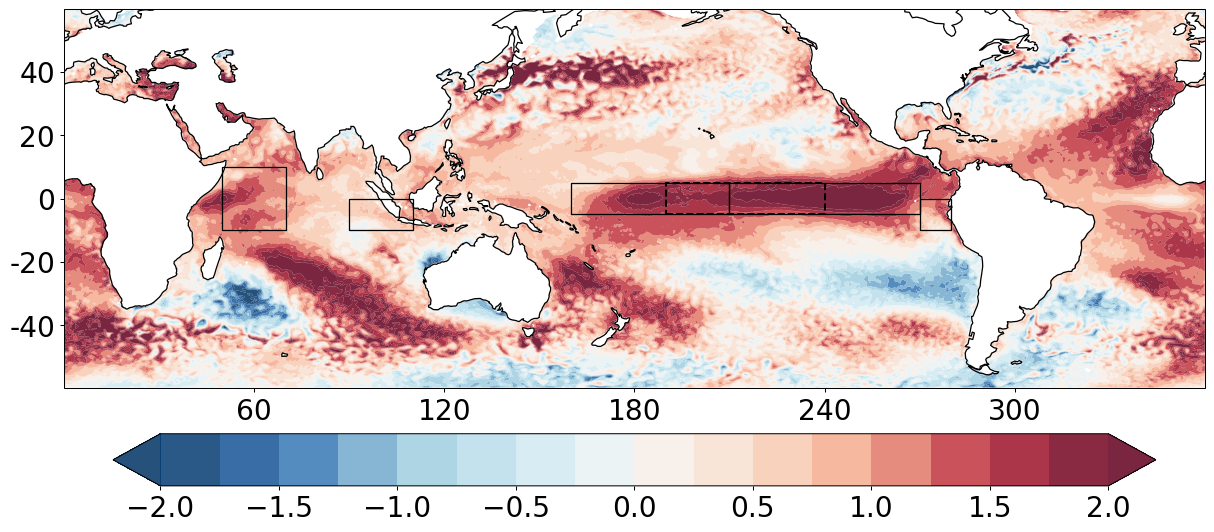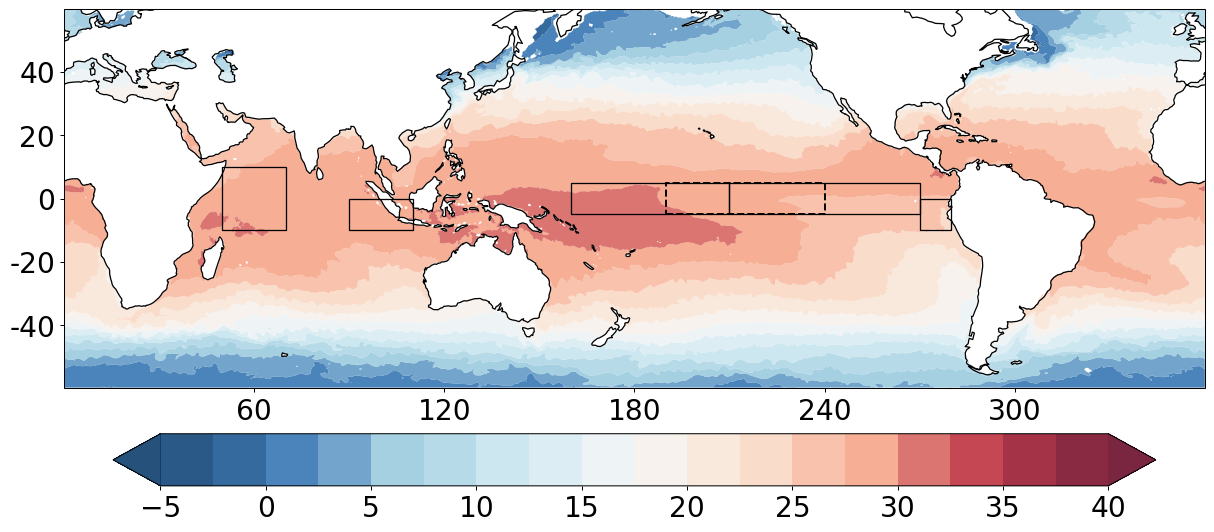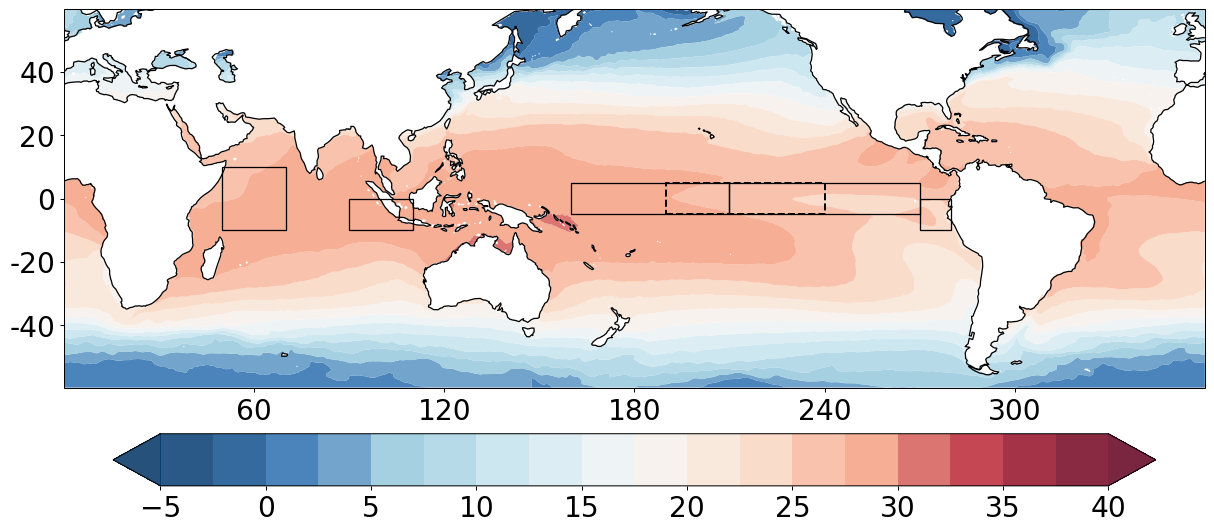January 2024 Sea Surface Temperature Assessment
A. Niño Regions
Niño sea surface temperature (SST) Indices are based on the average of SST anomalies across the given regions: Niño 1+2 (0-10S, 90W-80W), Niño 3 (5N-5S, 150W-90W), Niño 3.4 (5N-5S, 170W-120W) and Niño 4 (5N-5S, 160E-150W). These indices are used to monitor the conditions in the Tropical Pacific for the occurrence of El Niño or La Niña.
Strong warming of sea surface temperatures (SSTs) across the tropical Pacific prevailed during the month with anomalies greater than 1.5°C - 2.0°C in most of the Niño regions. However, the SST anomalies in the western Pacific and over most of the Maritime Continent were near to above average.
B. Indian Ocean Dipole (IOD)
The Indian Ocean Dipole mode Index (DMI) is defined as the difference between the SST anomalies (ºC) of Western (10ºS-10ºN & 50ºE-70ºE) and Eastern (10ºS-0ºN & 90ºE-110ºE) Equatorial Indian Ocean regions (WEST-EAST). The DMI values represent the intensity of the Indian Ocean Dipole (IOD); DMI values above +0.4 °C is referred as the positive IOD, DMI values below −0.4 °C is referred as the negative IOD and DMI values between +0.4 °C and -0.4 °C is referred as the neutral IOD.
IOD values were still positive during the month as SSTs observed over the western equatorial Indian Ocean were warmer than the eastern equatorial Indian Ocean. The SST over the eastern Indian Ocean has returned to near neutral.


